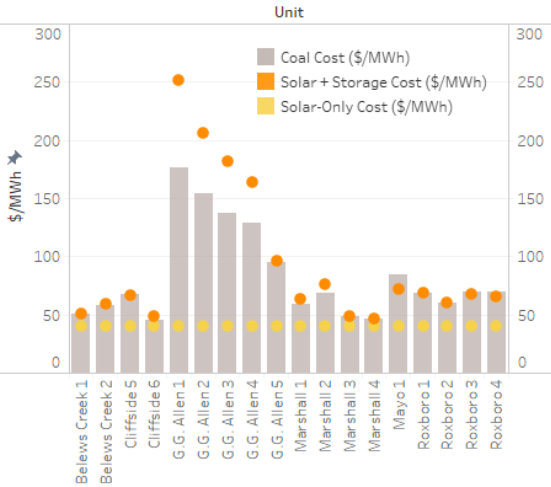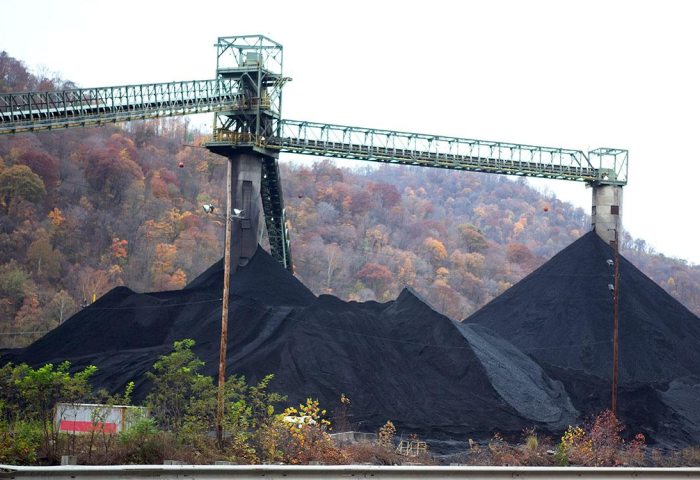Coal plants are the most expensive way to produce energy in North Carolina. And none of Duke Energy’s six aging coal plants are needed to meet the state’s long-term energy needs. Yet Duke Energy continues to operate all of its old, dirty coal plants—wasting billions of dollars and making customers pay for them.
Sierra Club analyzed the total cost of Duke Energy’s coal plants in North Carolina using publicly available data. Costs included fuel costs, operations and maintenance costs, and incremental capital investments made in equipment, structures, and improvements in the plants from 2015 through 2019.
These costs were then compared to Duke Energy’s marginal cost, which is the cost of meeting another megawatt of demand in Duke’s systems in each hour, weighted by when each plant generated electricity.
All of Duke’s coal plants lost money between 2015 and 2019, and in total, they lost $2.8 billion relative to the value of energy they produced. Relative to prices in the neighboring PJM wholesale electricity market, the plants lost a cumulative $2.0 billion.


Why would Duke knowingly waste billions of dollars? Because they don’t actually pay to run their coal plants—customers do. Nearly all of the $2.8 billion in wasted costs is passed on to customers’ electricity bills.
Cleaner is cheaper
Duke could be investing more in solar, which is already cheaper than all of Duke’s coal plants. And by 2025, solar plus battery storage could cost-effectively replace nearly all of Duke’s coal capacity. But Duke is not seriously expanding its solar portfolio. Instead, Duke continues to squander billions running their expensive, polluting coal plants.
We projected the cost of coal over the next 10 years, based on historical plant-specific information and estimates of incremental capital costs as plants age. The resulting cost was compared with stand-alone solar as well as solar plus storage. For solar plus storage, the storage component was sized to cover 100% of each plant’s capacity, while solar was sized to meet annual energy output from the plant. Costs over time were based on NREL’s Annual Technology Baseline.

Reduce Energy Bills and Pollution: Close Duke’s Coal Plants
Customers should not be paying billions of dollars for Duke to burn its dirtiest and most expensive fuel. Many of Duke’s polluting coal plants are also located in low-income Black and Brown communities, who are already exposed to a disproportionate share of the state’s air and water pollution.
Duke must close its coal plants and replace them with solar—starting right now. Duke is about to release a draft of its long-awaited Integrated Resource Plan (IRP), which will guide Duke’s decisions around coal and solar for the next 15 years. Duke’s plan must be approved by the North Carolina Utilities Commission, which can require Duke to close uneconomic, polluting coal plants and replace them with cleaner, cheaper solar.
Public input on the plan is critical. Customers must demand that the plan includes accelerated coal plant closures and a lot more solar, which will save Duke and its customers billions while providing cleaner air and water for everyone.
